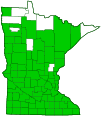catnip
(Nepeta cataria)
Conservation • Wetland • Description • Habitat • Ecology • Use • Distribution • Taxonomy
Description |
||
Catnip is a 12″ to 40″ tall, erect, perennial forb that rises on usually multiple stems from a taproot and fibrous roots. The stems are erect, light green, leafy, 4-angled, and branched above the middle. They are densely covered with short, fine, white, nonglandular, downward-pointing hairs. The leaves are opposite, egg-shaped to triangular, 1″ to 2¾″ long, and ¾″ to 1¾″ wide. They are on slender, ¼″ to 1¼″ long leaf stalks. They become smaller and shorter stalked as they ascend the stem. The blades are heart-shaped to wedge-shaped at the base and taper to a point at the tip. The upper surface is green and moderately covered with short, fine, white hairs. The lower surface is grayish-green and densely hairy to almost woolly with short, fine, gray hairs. The margins are coarsely toothed with rounded teeth. The leaves are noticeably fragrant with an herbal, not minty, scent. The inflorescence is a dense, branched, interrupted cluster (panicle) at the end of the stem and branches. The panicles are ¾″ to 2⅜″ long and ½″ to 1½″ wide. The flowers are arranged in dense whorls that are subtended by hairless, broadly egg-shaped, abruptly tapered, inconspicuous bracts. The flowers are ⅓″ to ⅔″ long. There are 5 sepals, 5 petals, and 4 stamens. The sepals are green and are fused at the base into a 3 ⁄16″ to ¼″ long calyx tube then separated at the tip into 5 teeth. The petals are dull white. They are fused at the base into a slender corolla tube then separated at the tip into 2 widely spreading lips. The upper lip has 2 lobes. The lower lip has 2 small lateral lobes and a large central lobe that is sometimes notched. The lower lip has many small purple spots. The stamens have white to pinkish-white filaments and purple anthers. They extend just outside of the corolla tube. The fruit is an egg-shaped, reddish-brown, 1-seeded nutlet. Catnip is easily identified In the early spring. It appears as a dense cluster of grayish-green, fuzzy, mint-like leaves. Identification can be confirmed by crushing one of the leaves to release the characteristic, non-minty odor. |
||
Height |
||
12″ to 40″ |
||
Flower Color |
||
White with pink spots |
||
Similar Species |
||
Habitat |
||
Moist to dry. Disturbed sites. Full or partial sun. |
||
Ecology |
||
Flowering |
||
July to August |
||
Pests and Diseases |
||
|
||
Use |
||
|
||
Distribution |
||||
|
Sources |
|||
| 3/23/2023 | ||||
Nativity |
||||
Native to Asia and Europe. Introduced, cultivated, escaped cultivation, and now naturalized in North America. |
||||
Occurrence |
||||
Common |
||||
Taxonomy |
|||
| Kingdom | Plantae (Plants) | ||
| Division | Tracheophyta (Vascular Plants) | ||
| Subdivision | Spermatophytina (Seed Plants) | ||
| Class | Magnoliopsida (Dicots) | ||
Order |
Lamiales (Mints, Plantains, Olives, and Allies) | ||
Family |
Lamiaceae (Mint) | ||
| Subfamily | Nepetoideae | ||
| Tribe | Mentheae | ||
Subtribe |
Nepetinae (catmints, ground ivies, and hyssops) | ||
| Genus | Nepeta (catmints) | ||
Synonyms |
|||
Common Names |
|||
catmint catnip catwort field balm |
|||
Glossary
Axil
The upper angle where a branch, stem, leaf stalk, or vein diverges.
Bract
Modified leaf at the base of a flower stalk, flower cluster, or inflorescence.
Calyx
The group of outer floral leaves (sepals) below the petals, occasionally forming a tube.
Corolla
A collective name for all of the petals of a flower.
Filament
On plants: The thread-like stalk of a stamen which supports the anther. On Lepidoptera: One of a pair of long, thin, fleshy extensions extending from the thorax, and sometimes also from the abdomen, of a caterpillar.
Panicle
A pyramidal inflorescence with a main stem and branches. Flowers on the lower, longer branches mature earlier than those on the shorter, upper ones.
Rhizome
A horizontal, usually underground stem. It serves as a reproductive structure, producing roots below and shoots above at the nodes.
Visitor Photos |
|||||
Share your photo of this plant. |
|||||
| This button not working for you? Simply email us at info@MinnesotaSeasons.com. Attach one or more photos and, if you like, a caption. |
|||||
|
|||||
MinnesotaSeasons.com Photos |
|||||
Plant in Early Spring |
|||||
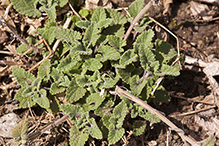 |
|||||
Inflorescence |
|||||
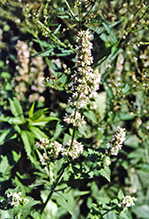 |
|||||
Flower Head |
|||||
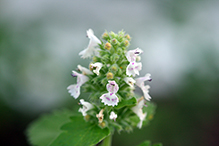 |
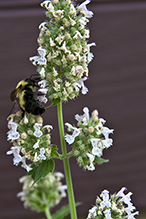 |
||||
Leaves |
|||||
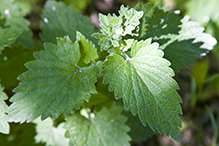 |
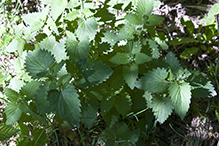 |
||||

Slideshows |
||
| Catnip DianesDigitals |
||
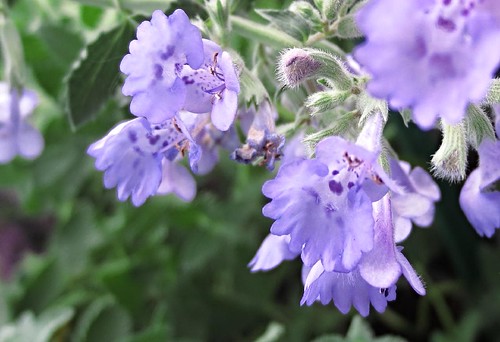
|
||
About
Copyright DianesDigitals |
||
| Nepeta cataria (Catnip) Allen Chartier |
||
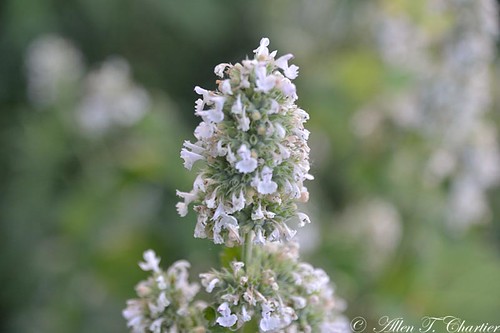
|
||

Visitor Videos |
|||
Share your video of this plant. |
|||
| This button not working for you? Simply email us at info@MinnesotaSeasons.com. Attach a video, a YouTube link, or a cloud storage link. |
|||
Other Videos |
|||

Visitor Sightings |
|||||
Report a sighting of this plant. |
|||||
| This button not working for you? Simply email us at info@MinnesotaSeasons.com. Be sure to include a location. |
|||||
|
|||||
MinnesotaSeasons.com Sightings |
|||||
Bertram Chain of Lakes Regional Park Carpenter St. Croix Valley Nature Center Carver Highlands WMA, South Unit Clifton E. French Regional Park John Peter Hoffman Spring Brook Valley WMA Margherita Preserve-Audubon Prairie Minnesota Valley NWR, Rapids Lake Unit Mound Spring Prairie SNA, North Unit Mound Spring Prairie SNA, South Unit P.N. and G.M. Nelson Wildlife Sanctuary Prairie Creek WMA, Koester Prairie Unit Sand Prairie Wildlife Management and Environmental Education Area |
|||||

|
Created: Last Updated: © MinnesotaSeasons.com. All rights reserved. |
